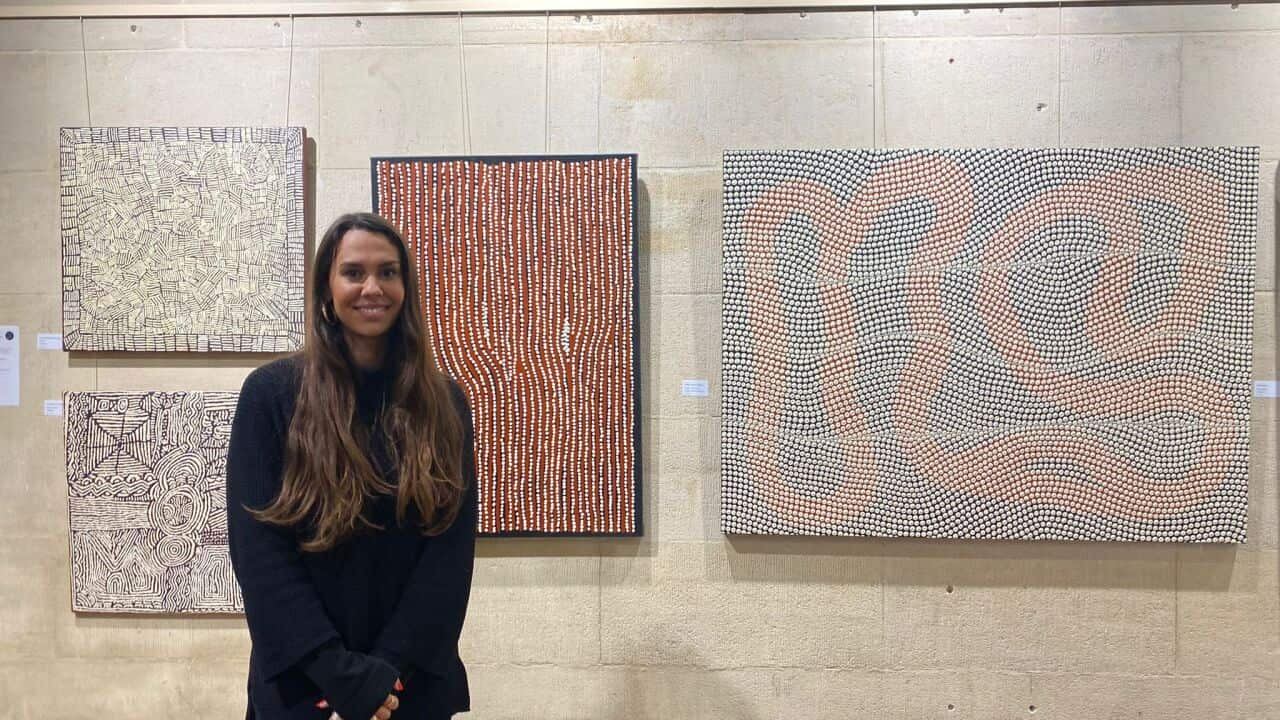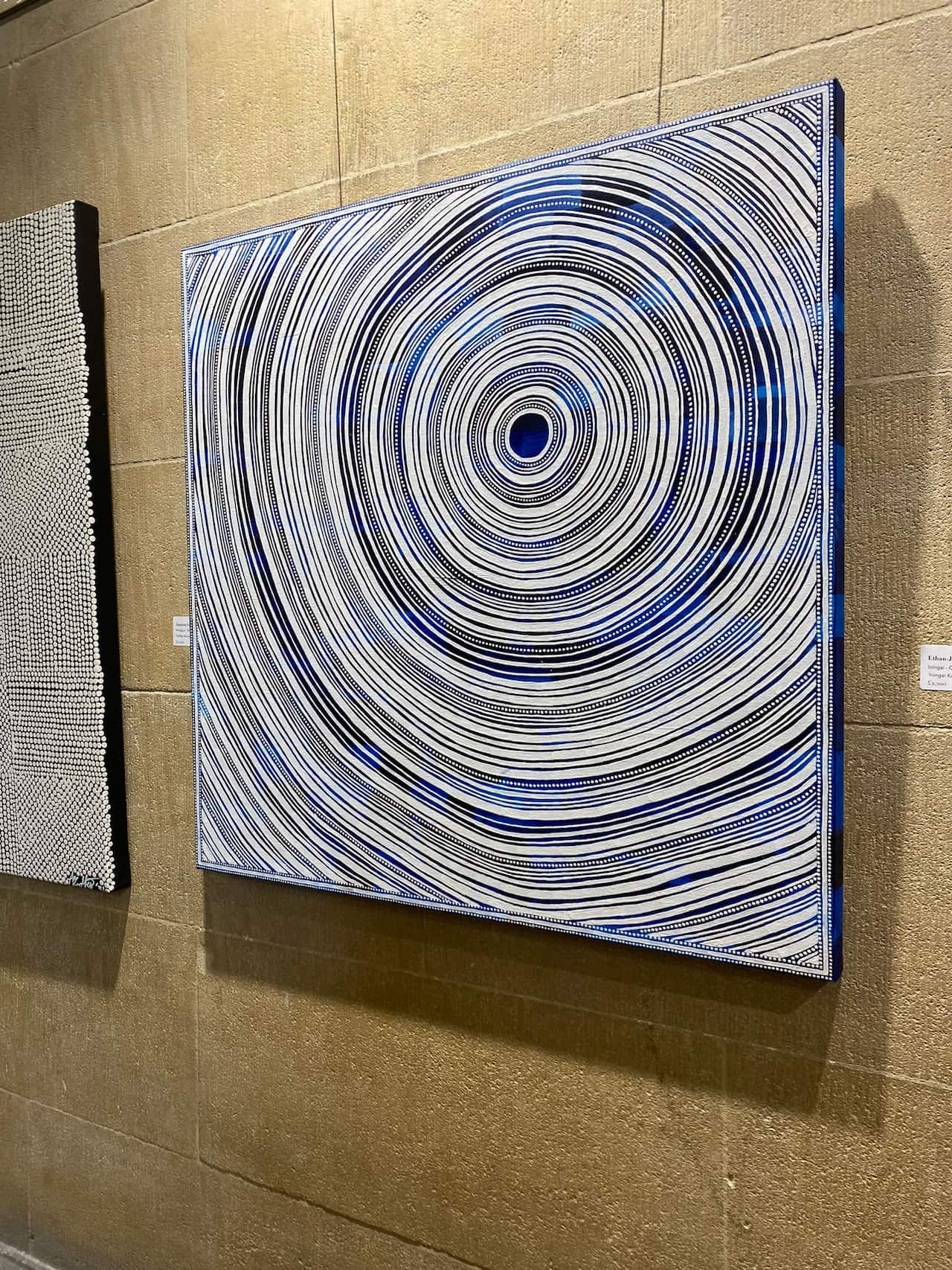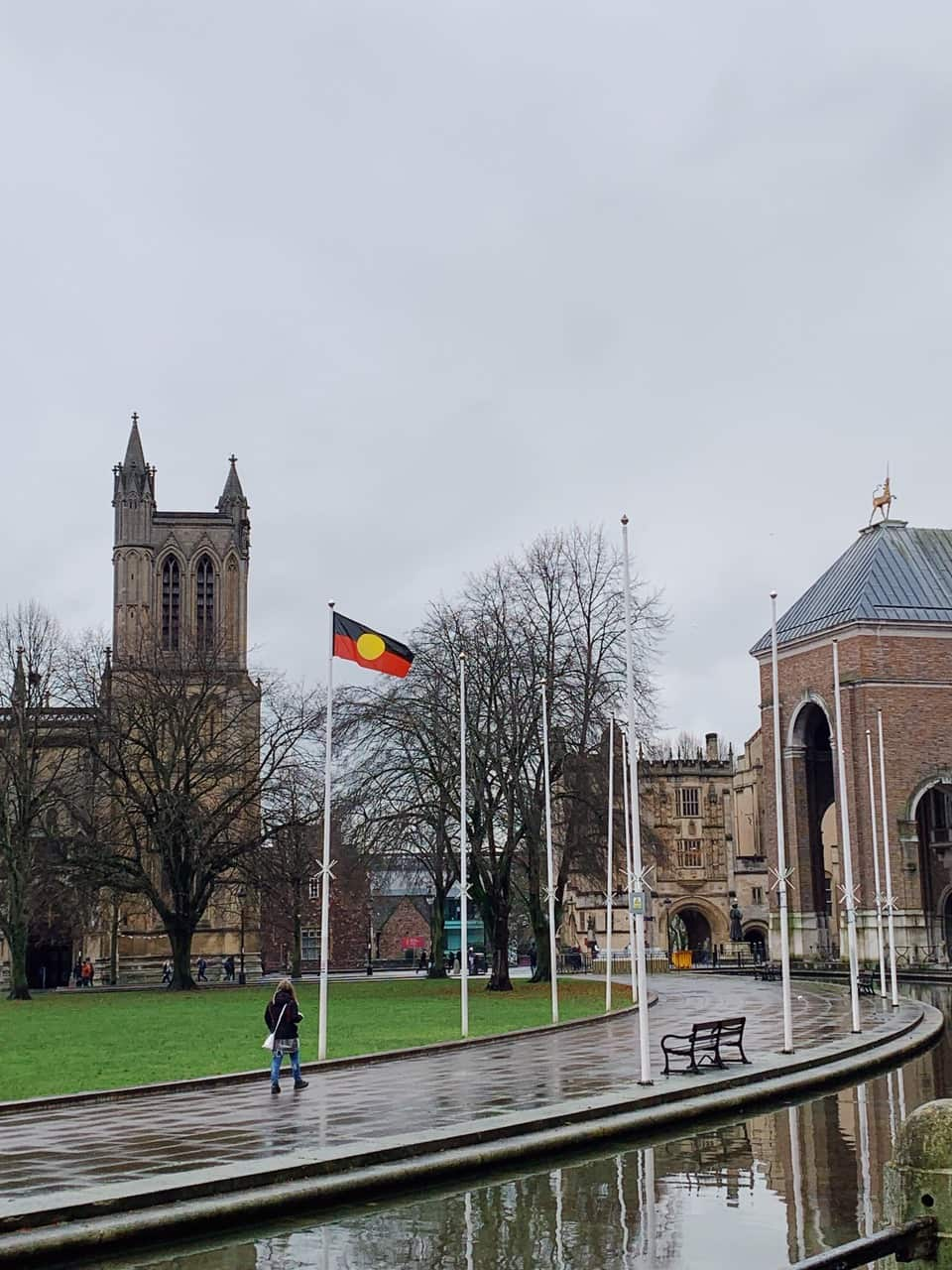This Wiradjuri-British artist is creating spaces for Aboriginal voices to be heard in the UK
Jasmine Coe honours Country, culture and her famous father Paul with the first Aboriginal-owned art gallery in the United Kingdom.

Jasmine Coe's art gallery is open in Bristol, displaying the works of 17 Aboriginal artists in its latest exhibition, WINTER. Artwork by Ned Grant courtesy of Aboriginal Art UK. Credit: NITV
On the other side of the world, in the brisk air of Bristol, England, waves a lone Aboriginal flag.
It's flying to mark the opening of Coe Gallery's newest exhibition, curated by the gallery's founder - Wiradjuri-British artist, Jasmine Coe.
Coe was born and raised in the United Kingdom, and Coe Gallery is the country's only Aboriginal-owned art gallery.
“Being an artist myself, and being on this side of the world, I just felt that there needed to be more spaces where Aboriginal voices could be listened to and artists can share their stories," she told NITV.
“The gallery is inspired by my father’s activism and the work that he did … I want to celebrate that.
“The gallery is in honour of ... his lifetime of work, and also my wider family."
A shared history
As the United Kingdom is plunged into the colder seasons, Coe has aptly named her newly curated exhibition 'WINTER'.
The exhibition has 17 artists’ work on display, three of which are also Wiradjuri, including Hannah Lange, Cara Shields, Jay Bird and Alex Birdfox.
Of the reception from UK audiences, Coe says its heartening to educate and share culture.
"I think that Aboriginal culture should be celebrated throughout the world and especially [in the UK]," she said.
“I think people are genuinely moved by the beauty and the resilience and the strength of the culture and I think that’s so important that has space here…
"People can go away and take that with them and encourage that love for nature on this side of the world because, to me, there’s a bit of a disconnect.
“Most people are aware of the history, but it’s not something that is taught on this side of the world, and because it is the UK’s history, there has to be a space where it’s talked about."
Staying connected from across the globe
Art, history, and activism run in Coe's family.
Her father, the famous Paul Coe, and her uncle Cecil Patten were the first to plant the Aboriginal flag into the sands of Dover Beach in 1976, symbolically claiming British soil as Aboriginal land and challenging the falsehood of 'terra nullius'.
Earlier this year, Coe honoured the historic moment, installing a plaque at Dover Beach during a festival celebrating Indigenous cultures around the world.
“It was quite emotional actually: it was very personal, as well as it being historical,” says Coe.
“It was amazing thinking of them all as we unveiled it and really celebrated them.”
For Coe, art is the medium that keeps her connected to culture and through which she expresses her experiences and internal struggles, including the 20 years she and her father were apart.

Father Moon by Jasmine Coe on display at the Coe Gallery in Bristol, UK. Credit: NITV
“[The pieces] are a celebration of the beauty of the moon, but also my relationship with my father,” says Coe.
“He gave me my middle name, Arana, which is ‘moon’ in Wiradjuri.
"Every time I look at the moon, I think of him and feel, because we had that absence, he was always with me ... It makes me feel connected with him.”
A journey home to Country
In 2016, Coe travelled from the UK to Wiradjuri Country for the first time, meeting family members, listening and learning.
“It was amazing,” says Coe.
“My sisters took me back to Cowra, which is where all my family are from, and I went to Erambie mission and saw where my grandmother lived, where my family lived.
"[I] spent time on the river and was able to connect in that way and things like that have stayed with me, and I’m able to carry that and use that in my work.
“It’s very special because I live on this side of the world, so to be able to have these memories and experiences that I can cherish and use in my work means everything to me.”
Stepping into Coe Gallery, surrounded by the art and stories of various Indigenous artists, the books, and the native Australian flowers she’s managed to source from a local florist outside Bristol; it’s easy to forget the physical distance, and home doesn’t feel so far away.
Coe says it was connecting with her culture that was the catalyst for pivoting her style, and for the inspiration for her work to come from within.
From strength to strength

The Aboriginal flag flies in Bristol, England. Credit: Supplied
In September, Coe Gallery worked with the Australian High Commission and displayed artwork for the first Indigenous Fashion Show at Australia House.
“That was such a great project to be part of,” says Coe of the event.
“It was a real celebration of Aboriginal design, the designers, the clothing was beautiful and we had the exhibition that ran alongside it. I’m hoping there will be more projects like that next year.”
Looking ahead, Coe says she wants to continue to collaborate with more artists from home, to share their art all over the UK and Europe, and encourages people to reach out.
“We’re always looking for artists to work with,” says Coe.
“It’s always lovely showing new works and introducing new artists to this side of the world.”
For NITV article please click here
